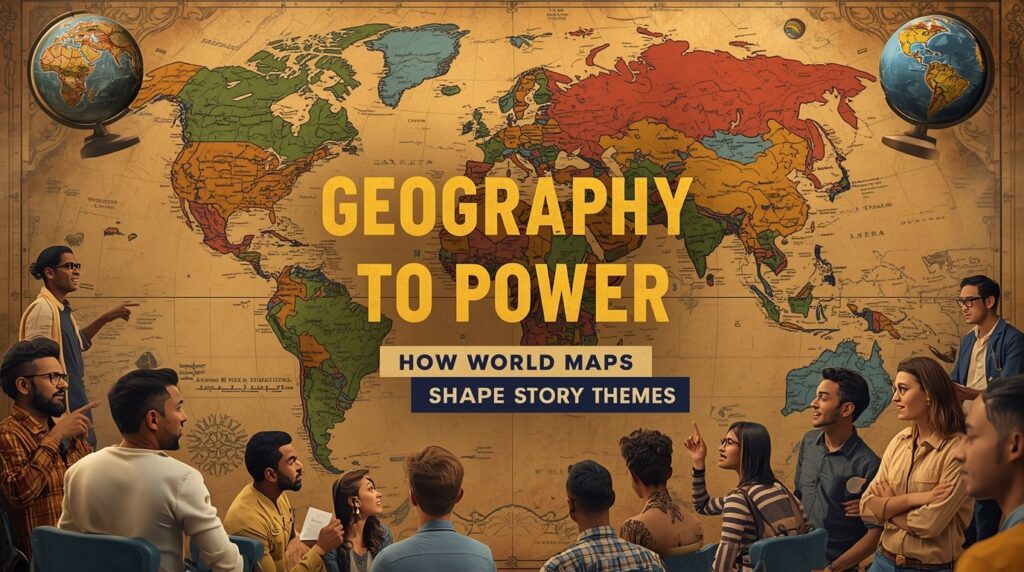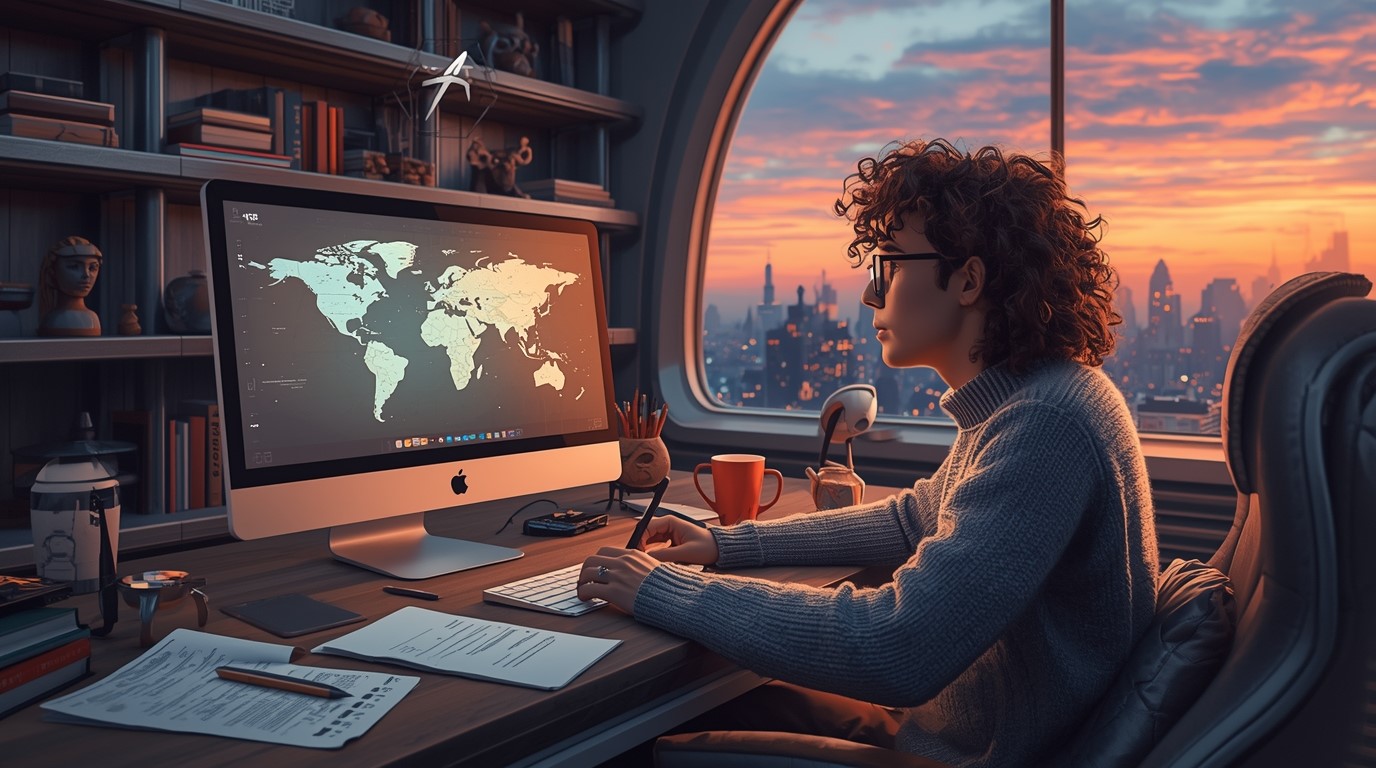From Geography to Power: How World Maps of Continents Shape Story Themes
What if your map decided who lives, who loses, and who never even reaches the city gates?
You spend time drawing coasts, mountains, and tiny cities. The map looks great. But when you write or run a session, nothing really changes. Your heroes still go anywhere. Borders feel safe. The land has no real power.
👉That is where smart geography and AI step in.
With tools like Summon Worlds, story world maps stop being background art and start shaping power, choices, and themes. Rivers, roads, and walls can now set the rules.
In this guide, you will see how geography in storytelling can drive tension and plot, and how AI can help you keep it all tight and clear. If you want your map to finally matter on the page and at the table, keep reading.
Table of Contents
What Story World Maps Really Do
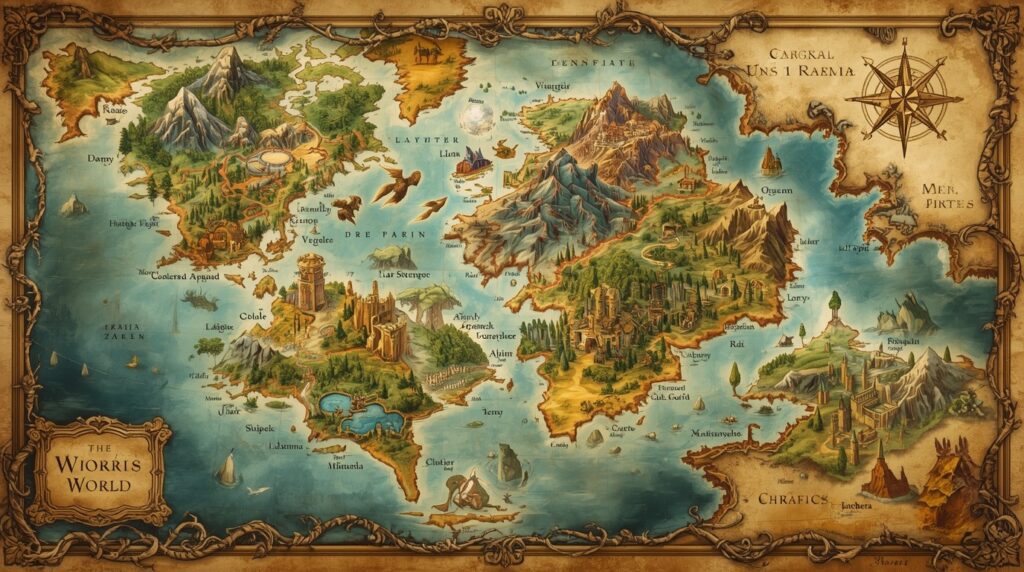
First, let us be clear about the idea.
Story world maps are not only drawings of land. They are a simple way to show how people, power, and places connect. When you look at a good map, you should feel where trade moves, where armies march, and where people are stuck.
This is the heart of geography in storytelling. Distance, weather, rivers, and borders all carry meaning. A desert can stand for hardship. A narrow pass can stand for control. A broken bridge can stand for lost trust.
In older worldbuilding, many of us treated maps as decoration. We sketched a continent. We named ten cities. Then we wrote the story as if the map did not exist. Travel times shifted from scene to scene. Borders had no impact. Ports were there only to look nice.
✅Today you have better options.
Read our article about the Best Fantasy Map Generators
Modern worldbuilding map creation can tie every key place to a story role. AI tools can help you list locations, create art for them, and link them to characters, items, and quests. In Summon Worlds, you can set up Worlds, locations, and entities so each part of the map has a job in your story.
The shift is simple.
- ⏳Old way: map first, story second, and they rarely meet.
- ⏰New way: story and map grow together. The map shows where power moves. The story proves it on the page or at the table.
When you think in these terms, world-map design in fiction is no longer about drawing skills. It is about choices. Who controls the river. Who has the high ground. Who is boxed in by mountains. That is where themes of power, freedom, and fear start to appear.
Common Map Mistakes That Kill Tension
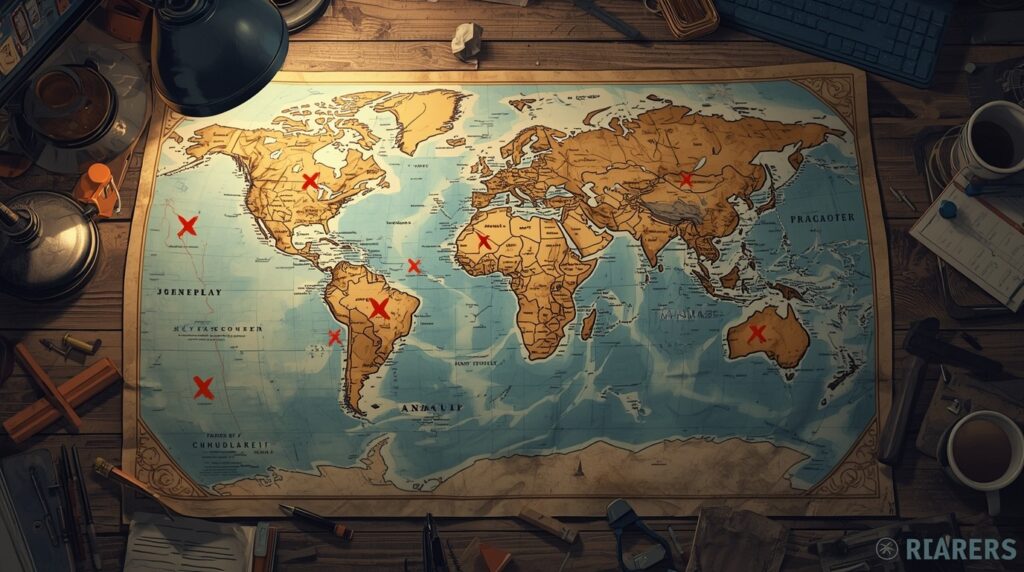
Let us talk about the traps most of us fall into.
1. The Pretty But Useless Map
You spend hours on a map. It looks great. But the story would be the same if you removed it.
This happens when the geography does not change what people can do. If the hero can ride from any city to any other in one scene, distance has no meaning. If borders never cause risk, politics has no teeth.
🛠️Fix it: Decide what your map makes hard. Long cold roads. Broken bridges. Guarded borders. Let these limits shape key scenes.
Read our article about How to design a fantasy map
2. No Sense Of Scale Or Travel
If your group reaches a far city in one night and then spends three weeks crossing a small forest, readers notice. Even if they cannot explain why, the world feels loose.
🛠️Fix it: Pick simple rules. Maybe horses can cross one region per day. Maybe ships move one coast marker per day. Keep it rough but steady. You do not need hard numbers. You just need to be fair.
3. Power That Ignores Geography
Many stories talk about great empires. But the fictional map power dynamics do not match the land. A tiny, landlocked city controls the sea. A kingdom with one narrow valley somehow feeds ten million people.
Readers who love maps feel the break at once.
🛠️Fix it: Ask who owns rivers, ports, and passes. Ask where food grows. Ask where mines sit. This alone will fix half of your map logic.
4. Themes That Do Not Match The Map
You say your story is about isolation. Yet the map shows easy roads, safe seas, and short trips. Or you say it is about control, but there are no choke points.
This is where maps shaping narrative themes becomes key. The land should echo the core idea.
🛠️Fix it: Write your main theme in one short line. For example, “Power always flows to whoever controls the roads.” Then adjust the map so readers can see this rule in action.
5. The Map Never Changes
Years pass. Wars rage. But the map stays the same. That breaks the sense of real history.
🛠️Fix it: Let borders move. Let cities fall. Let new routes open. You can track this in tool notes, timeline features, or separate versions of your map. In Summon Worlds, you can reflect these shifts in world history, character notes, and location updates.
Read our article about Fantasy Location Generators
Turning Geography Into Power With Summon Worlds
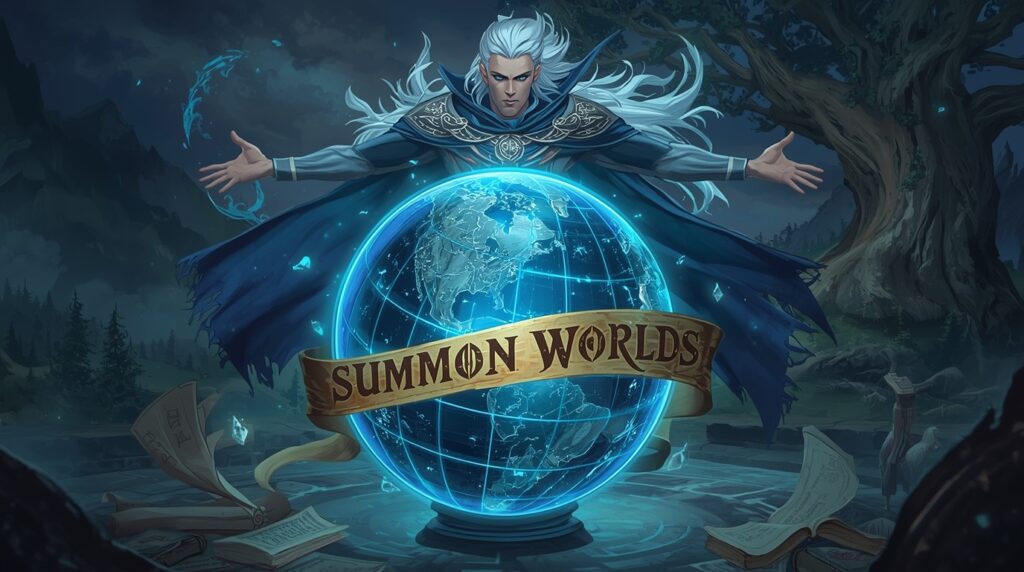
Now let us talk about how tools can help you.
Summon Worlds is built for shared fantasy worlds. It gives you AI art, character builders, AI chat, and a clear world structure with worlds, locations, and entities. That means your story world maps are not alone. They sit inside a full system of people, items, and events.
👇Here is how that supports your themes.
First, worldbuilding map creation becomes faster. You can generate images for key locations. City gates. Desert shrines. Mountain fortresses. You can attach these images to entities so each place feels real. That visual cue reminds you to use the location in scenes.
Second, fictional map power dynamics become clearer when every city and region links to people. You can create rulers, guilds, or monsters tied to a location. You can add backstories that explain why they fight over that pass or that harbor.
Third, geography in storytelling becomes easier when you can see it in your workspace. Worlds in Summon Worlds have a clear structure. Worlds hold locations. Locations hold entities like characters, items, and spells. When you view a location, you see who lives there and what matters. That makes it much easier to design scenes that fit the land.
Fourth, AI character chat lets you test your map logic. Talk to a border guard character. Ask how long it takes to reach the capital. Ask what trade route they fear losing. The answers, shaped by the lore you add, highlight gaps in your map plan.
Fifth, the coming world features and real time collaboration will let groups build shared maps and power webs. Game masters can plan campaigns. Co authors can agree on borders and roads. Everyone works from the same shared world, not separate notes.
✅In short, using modern tools does not replace your map. It helps you keep it active. You move from a single image to a full network of places, people, and stakes. That is the real goal of using maps for story structure.
🧭 Ready To Turn Your Map Into a Story Engine?
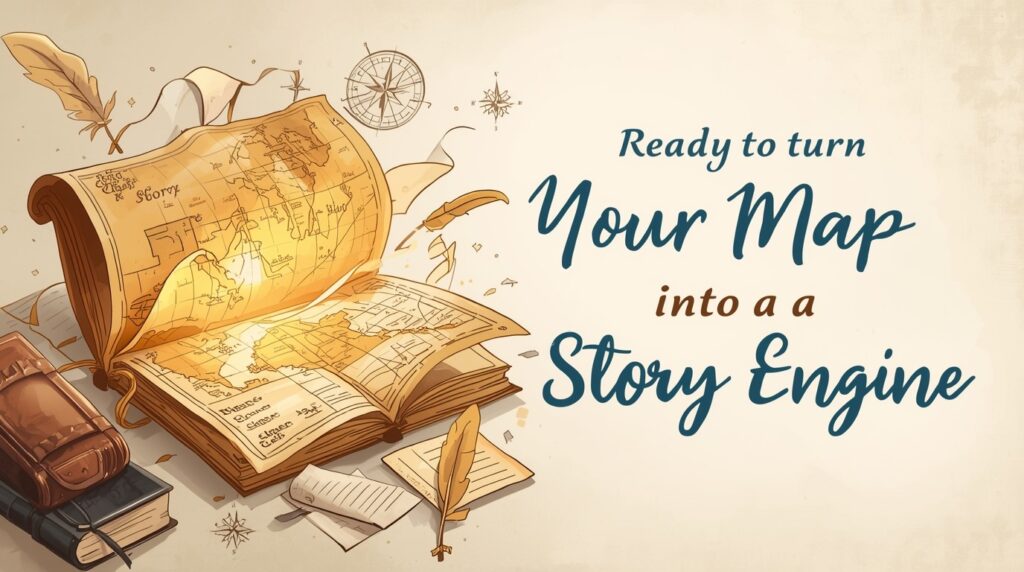
Maps do not have to be wall art. They can be engines that drive conflict, theme, and mood. When you treat story world maps as tools, you start to ask better questions. Who controls the river. Who owns the pass. Who is trapped by the sea.
You saw how geography in storytelling shapes what is possible. You saw how mistakes with scale, borders, and power can break tension. You also saw how tools like Summon Worlds help you link locations, characters, and themes in one place.
If you use your map to set limits, define power, and place key story beats, your world will feel solid. Your readers or players will sense that the land matters. That is the goal.
❓Ready to build a world where geography and power work together?
You can download Summon Worlds on Android and iOS and start turning your maps into living story tools today.


